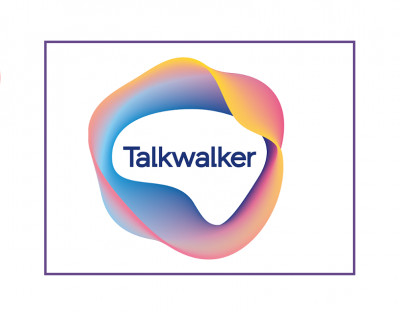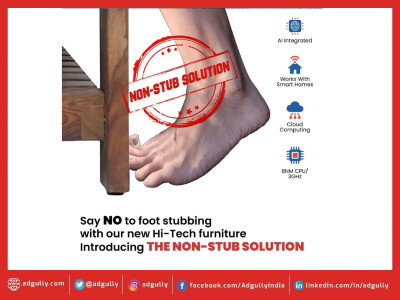The pandemic has brought consumer conversations to the forefront: Benjamin Soubies
Talkwalker, a leading enterprise listening company, has launched its latest report on ‘State of Conversation 2021 in India’. A survey was conducted with over 1,000+ marketing, PR, and consumer insights professionals, focusing on the importance of consumer and customer conversations for data-driven brands. As the pandemic has led to bigger changes and developments for all the brands as well as agencies, it has also brought consumer conversations to the forefront. Most of the innovative brands are in the process of maturing through the different stages of the customer-centric journey.
When it comes to building the consumer data experience, the challenge lies in activating the data and focusing on 360-degree of customer and this latest research discusses the growing importance of customer-centricity and conversational intelligence for enterprise brands in the midst of coronavirus.
In conversation with Adgully, Benjamin Soubies, Managing Director for Asia Pacific and Japan at Talkwalker, speaks about the highlights of the ‘State Conversation 2021’ report by Talkwalker, how conversational intelligence has leveraged beyond customer service and brand promotion, how consumers are engaging with brands via social media platforms and much more.
Your research highlights that only 18% of marketers state that their organisations monitor and analyse conversations through a unified platform and this is a missed opportunity. Most organisations have adopted an SEO strategy because visibility on Google is hygiene. But what’s the argument for monitoring conversations?
When we say “conversations”, it is basically all consumer conversations – directly interacting with brands or not – that take place in various channels such as social media, blogs, forums, review sites, call centers, custom research.
Trying to cope with this wide spectrum of conversations is already a challenge for most organisations due to reasons such as lack of tech/ solutions in place or different departments operating in silos. As noted in our State of Conversation 2021 report, what happened in the past year and so is “the pandemic has brought consumer conversations to the forefront. In order to survive the coming years, brands will need to quickly identify the best ways to analyse conversations at scale and inject the subsequent insights in each and every department of the organisation to optimise their respective strategies”.
Two of the key challenges for clients to harness the potential of their data are: 1) it is buried in silos, and 2) they don’t know how to interpret the data. Usually, an organisation pulls up the data only when there is an intention to solve a problem. How can data inform the intention of the organisation?
A lot of companies today have already built or are in the process of building their consumer data lake across their many sources (paid/ owned/ earned channels). The challenge lies in activating this data and having a unified/ 360-degree customer view that is as real time as possible, to better inform their business decisions. Pre-emptive rather than reactive.
A good way to start assessing at which stage your organisation is at in this journey to 360-degree customer centricity is by asking questions like:
- How is my team collecting consumer conversations right now?
- How is my team leveraging this information to drive decision-making?
- What is my team’s main struggle with regard to analysing data from conversations?
- What can I do to improve my team’s data savviness?
Please explain how conversational intelligence can be leveraged beyond customer service and brand promotion?
Most innovative brands are in the process of maturing through the different stages of the customer-centricity journey. The ultimate objective here is to have a single source of truth to understand your customer in real time, and conversational intelligence is all about identifying the voice of the customer across your social, consumer and customer data and activating it in real time across your departments.
“From social intelligence covering all of your brands, campaigns and competitor’s data. To consumer intelligence to understand growth opportunities and risks in the market by analysing category, audience, and current event trends. To customer intelligence covering your customers’ experience, satisfaction and service.”
Brands are increasingly delivering all aspects of the product and service experience online. Yet in certain categories, customers ache for a human element. Your study highlights the need for brands to humanise customer engagement. Does that mean brands will need to rely on traditional customer support despite tech?
There are a number of ways in which brands can add a “human touch” when engaging with consumers. Brands can speak in a more human way to their audiences on social, as well as through platforms like email and chat. These brand interactions go beyond customer support and customers expect a consistent CX across channels.
The key is in creating customer experiences that people can relate to and that are aligned to your brand purpose.
Customers are engaging with brands via social media, blogs, and review sites, followed by call centers, news sites. Do you see companies investing increasingly in affiliate marketing channels to create positive conversations around their brand?
Typically, through affiliate marketing, more conversations are generated about a brand or a product as affiliates create content such as product comparisons, reviews, and tutorials.
With the Indian e-commerce market growing at an exponential rate, we can only expect businesses to invest more in affiliate marketing to boost brand exposure and revenue. The rise of mobile shopping and new payment methods such as ‘buy now pay later’ are contributing to this growth.
In any company, your Chief Strategy Officer or Chief Information Officer are the ones who have access to data and make decisions. How can businesses or brands be more data-driven at an organisational level?
The challenge here is two-fold: Data silos within an organisation and lack of necessary tools to easily turn the data into actionable insights. According to our report, “50% of respondents confirm that access to insights from consumer conversations are limited to a specific department within their organisation”.
To be more data-driven, businesses must further break down data silos and put in place proper tools/ training to empower team members to analyse and turn data into actionable insights. This must start from the top, leading by example and make sure everyone in the company is empowered.

















Share
Facebook
YouTube
Tweet
Twitter
LinkedIn